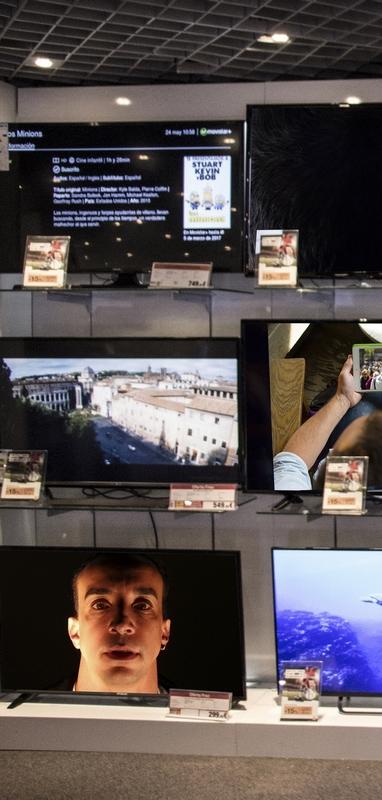








Be that as it may, this catalog or any portion there of may not be reproduced or used in any manner whatsoever without express written permission from Peripheral ARTeries and featured artists.
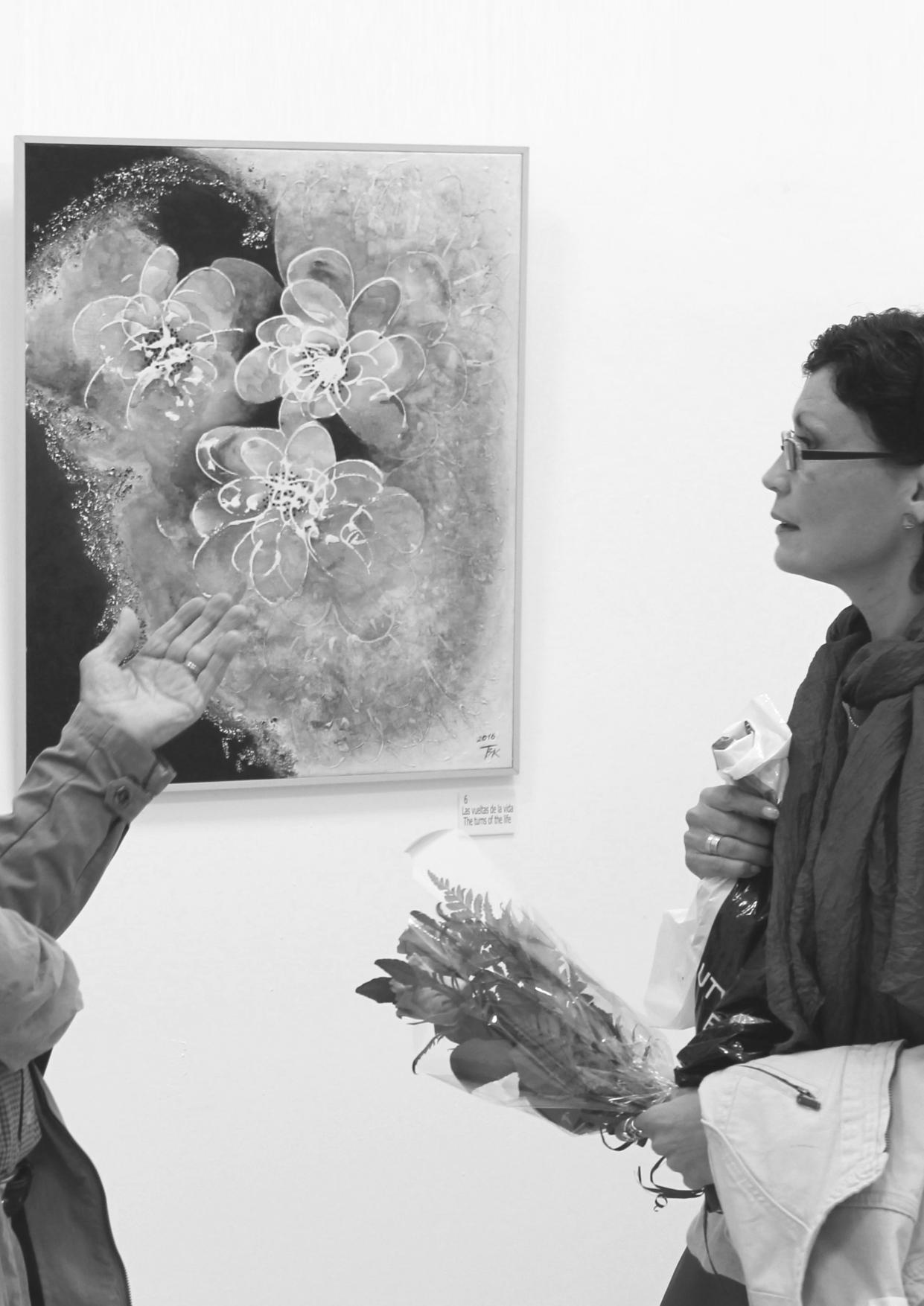
Lives and works in Israel
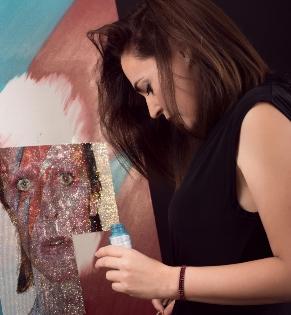
Lives and works in Tampa, Florida, USA
Lives and works in Barcelona, Spain
Lives and works in Jyväskylä, Finland
Lives and works in Manchester, United Kingdom
Lives and works in Tel Aviv, Israel

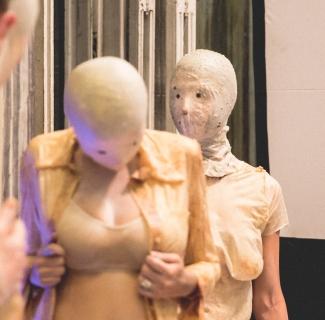
Lives and works in Brooklyn, New York, USA
Lives and works in Milwaukee, Wisconsin, USA
Lives and works in Naples, Florida, USA
Special thanks to: Isabel Becker, Julia Überreiter, Deborah Esses, Xavier Blondeau, Margaret Noble, Nathalie Borowski, Marco Visch, Xavier Blondeau, J.D. Doria, Matthias Callay, Luiza Zimerman, Kristina Sereikaite, Scott D'Arcy, Kalli Kalde, Carla Forte, Mathieu Goussin, Dorothee Zombronner, Olga Karyakina, Robert Hamilton, Carrie Alter, Jessica Bingham, Fabian Freese, Elodie Abergel, Ellen van der Schaaf, Courtney Henderson, Ben Hollis, Riley Arthur, Ido Friedman, Nicole Ennemoser, Scott Vogel, Tal Regev, Sarah Hill, Olivia Punnet and Simon Raab
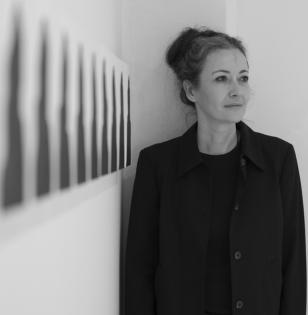
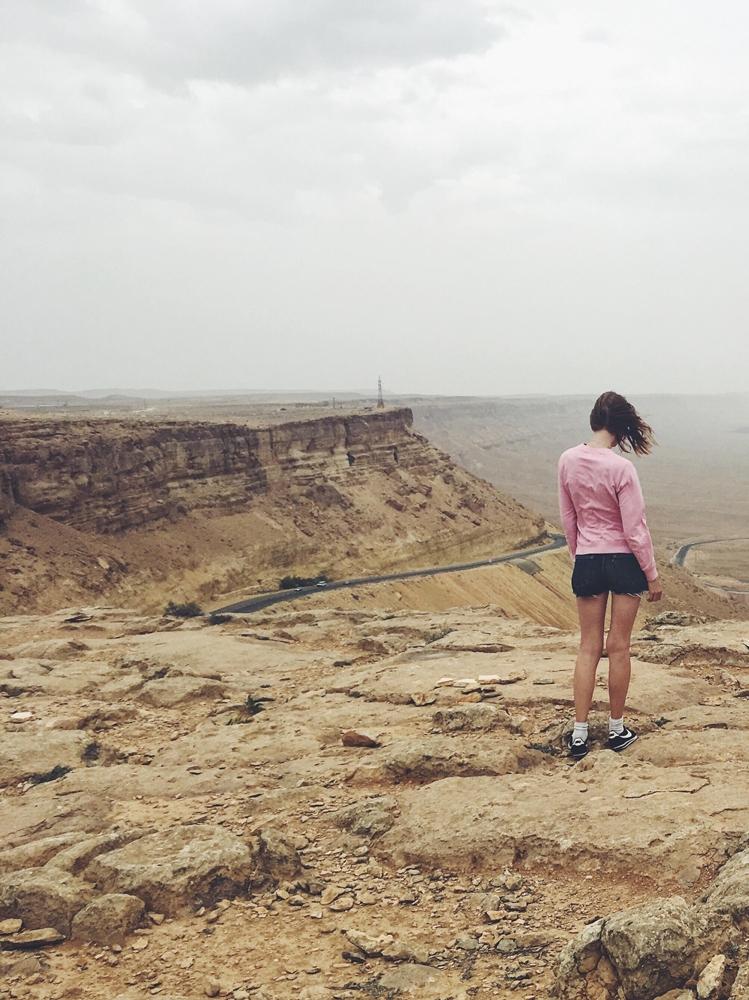

Artist Jane Sheiko's work draw the viewers through a multilayered journey. In her captivating body of works that we'll be discussing in the following pages she encapsulated both elements from daily life and unconventional sensitiveness, to trigger the viewers' perceptual parameters. One of the most impressive aspects of Sheiko's approach is the way it inquires into the notions of uncertainty, instability and fragility, accomplishing the difficult task of walking the viewers through an unconventional aesthetic experience: we are very pleased to introduce our readers to her stimulating and multifaceted artistic production.
An interview by Josh Ryder, curator and Barbara Scott, curator peripheral.arteries@europe.comHello Jane and welcome to Peripheral ARTeries: we would start this interview with a couple of questions about your background. Are there any particular experiences that did influence the way you currently conceive and produce your works? And in particular, how does your cultural substratum inform the way you relate yourself to the aesthetic problem in general?
Hello! I was born in Minsk, Belarus. Thanks to my artistic parents I
entered to "College of pictorial arts" and then to "Academy of arts". First ever picture I took I used outdated camera “Zenit" for. I was 17 at that time. I was shooting everything I saw, but after some time I was bored and became a stylist !!! When I came to study in Israel my desire to shoot took shape more distinctively. I've felt in love with Israel - its nature, beautiful people and local reality. Social backdrop, cultural identity always affect my works. To find beauty in ordinary routine and to depict it based on my background is my goal. Diversity of colors with its own rhythm drives my works to
some point. Significance is transparent sometimes but it always is.
The results of your artistic inquiry convey such coherent sense of unity: before starting to elaborate about your production, we would suggest to our readers to visit https://janesheiko.tumblr.com in order to get a synoptic view of your work: in the meanwhile, would you like to tell to our readers something about the evolution of your style? In particular,
would you shed light on your usual process and set up?
I would say I don't have a particular style, I like to catch a spontaneous shot and if it's good I'm blessed. Sometimes I see great landscape, but there is lack of character, so then me or my husband complement it with our prescience. Very seldom I shoot staging photos, but there are some. About the process - it's a continuous search, every moment I'm seeking to find a compromise between
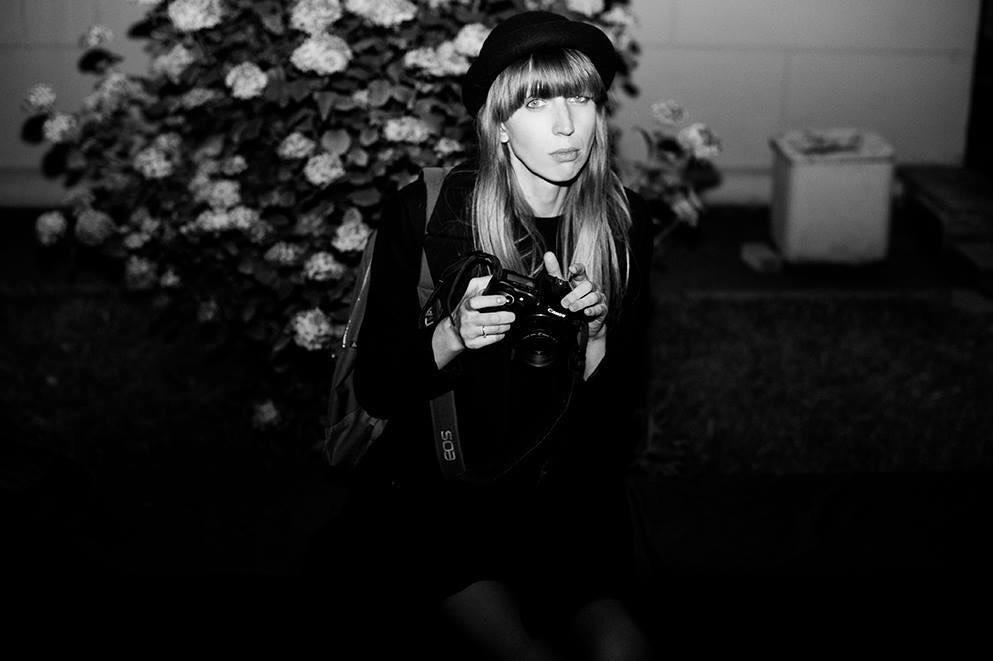 Jane Sheiko
Jane Sheiko
Ismael knows everything
different points of view. In my opinion the nature of the photography makes me a perfect spectator. Somebody
said:" Photography is an art of seeing and therefore the photographer sees more than the average person".
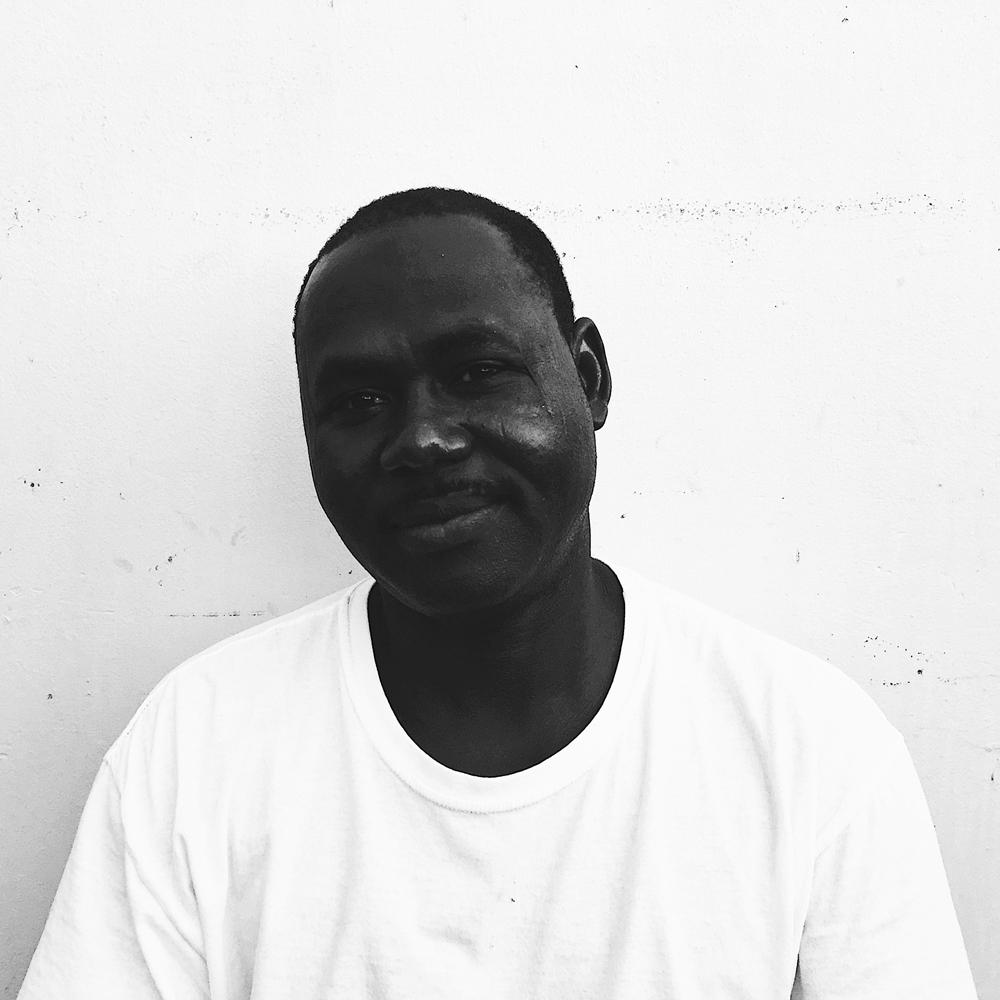
For this special edition of Peripheral ARTeries we have selected Ismael knows everything and Gone With the
Win, a couple of interesting works that our readers have already started to get to know in the introductory

pages of this article. What has at once caught our attention of your effective inquiry into the liminal area in which beauty and the sense of uncanny find a point of convergence is the way you have been capable of creating an autonomous aesthetics: when walking our readers through the genesis of Ismael knows everything and Gone With the Win would you tell us your sources of inspiration?
Move to a multicultural environment forced me to see things under the different angle which I can depict in my works. Inspiration is everywhere, so I'm framing even when I'm in an everyday routine. Ismael knows everything - is a work from my long last project, I'm taking photographs of hotel stuff and put down their stories. Sometimes these photos separates from the project frames, develops in something bigger and live theirs own lives.
As you have remarked once, you consider yourself more a spectator than a photographer. You observe what is happening and what I think is important is framed in a frame: how much does everyday life's experience does fuel your creative process? In particular, do you think that a creative process could be disconnected from


Almost 12 apostles
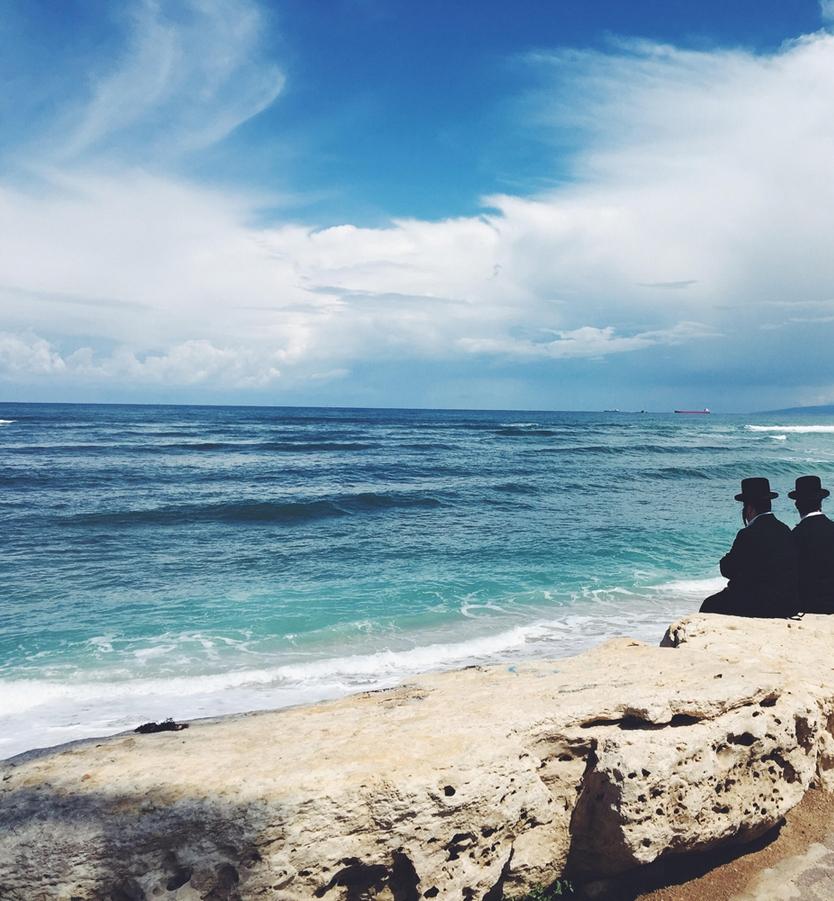
direct experience? (here we have reserved space for Sister Maggie and Reading, that you could mention in your answer, as well)
Art process is my everyday life. If I'm not in the process I'm bored. In my opinion the process can be exclude from direct experience. It happens by itself, some kind of improvisation. The idea appears in my head, I start think about it, it passes different stages and in the end comes out something completely different from the origin idea, but believe me I'm happy about it even more.
Elements from environment and reminders to the notion of landscape are particularly recurrent in your imagery and they never plays the role of a mere background: in particular, we like the way Gone With the Wind leaves space for the spectators to replay the scenes in their own intimate lives, letting them become emotionally involved in what you are attempting to communicate. What do you think about the role of the viewer? Are you particularly interested if you try to achieve to trigger the viewers' perception as a starting point to urge them to elaborate personal interpretations.
Viewer and his thoughts for me is a



sparring
vital part of photography and each piece of it is some kind of dialogue with a viewer. In the same time
creation is an independent process with unique end point of view, laying apart from perceptions of others.

stonewaves
Diversity of view angles shows how many lives could have only one frame in minds of people.
Photographer Thomas Ruff stated that "once nowadays you don't have to paint to be an artist. You can use



photography in a realistic way. You can even do abstract photographs". What is your opinion about the importance of photography in the contemporary art?
What happens to photography now and what happened to it in last hundred years is just marvelous. There is no doubt that photography occupies essential place in contemporary art. Nowadays the place of photography exceptional and contemporary art community precepts it like never before.
How does digital technology does inform your creative process? Do you constantly keep updated your setup or do you prefer to focus on a particular technology?
I've experimented a lot with technologies in university times and eventually I've found what suits me perfectly. I adore Polaroid and I have a whole collection of cameras, but it's not always convenient to work with such cameras from many points of view. Lately I've preferred disposable cameras, I love the results I get in the end. Besides these I shoot on iPhone it's extremely convenient and the quality is appropriate. I'm not a big fan of a long proceeding of photos, almost every time I trigger button on any of my cameras I know
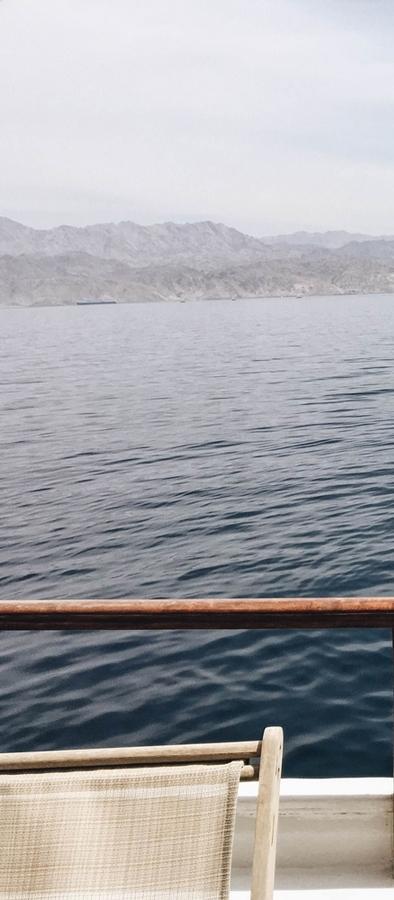
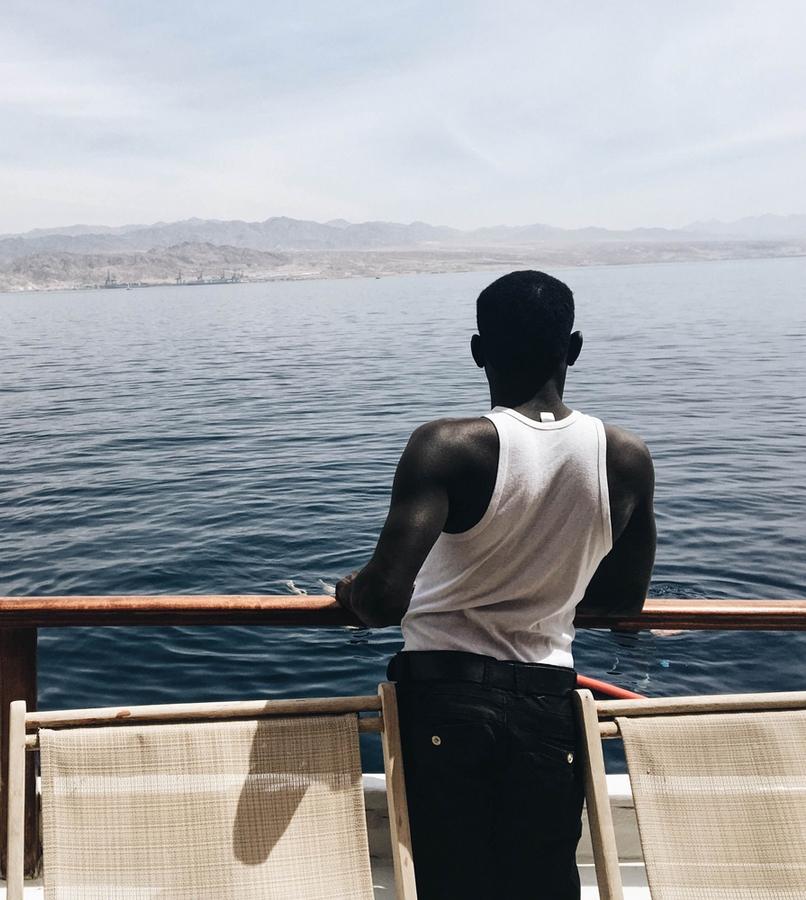

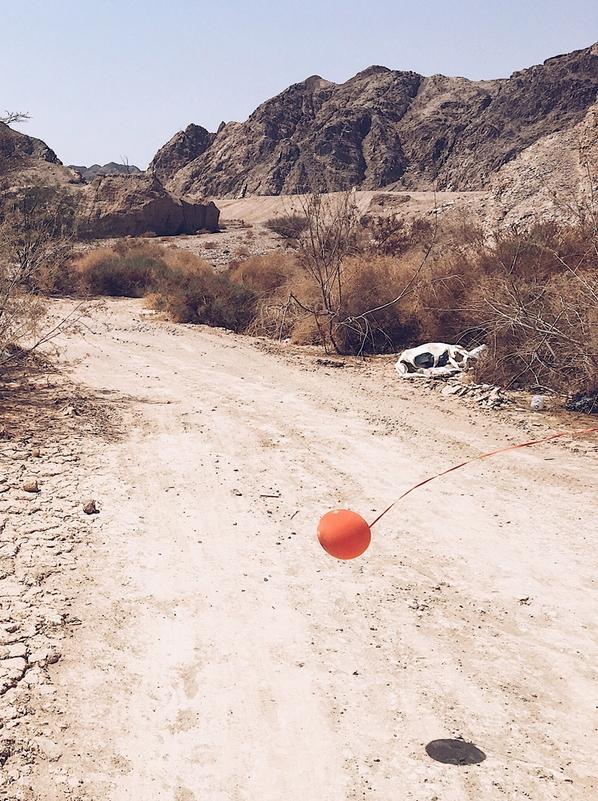

this is a finished picture. Maximum I can increase a definition or crop a picture.
While referring to perceptual reality, Gone With the Wind has such ambivalent quality that seems to walk the viewer to the point of convergence between reality and imagination. How do you consider the relationship between the real and the imagined?
I think tangibility is somewhere on the fringe of imaginary. At least I'm trying to embody it in my works. In the matter of fact photography it's something depicted already in the past with a plenty of possible perceptions in the future. Depends on a viewer's imagination and courage. 9) We like the way Ismael knows everything addresses us to capture what is behind the surface of the photography: how much important is for you to capture the intimate feelings of your sitters ? And how do you select them? I spend a lot of time almost with each of my sitters before capture them. Very seldom I feel from the first sight that I want to capture anybody, need time to get closer, to know each other, feel the energy and vibe, understand the person in front of me and be intelligible. If all these ingredients
matches then magic starts and involves both of us in deep exchange of steam and intimate stories that stranger won't never tell you.
Thanks a lot for your time and for sharing your thoughts, Jane. Finally, would you like to tell us readers something about your future projects? How do you see your work evolving?
I'm working on several long term projects and I'm very excited about it, it brings me joy. Besides I take part in different exhibitions where I invited. I would like to participate more in international events, but unfortunately there is no enough time. Great part of my works you can see on my Instagram account (http://instagram.com/janesvit). I find inspiration in the art-community environment by dint of digital channels, the future has already come and I enjoy all his goods. is transparent sometimes but it always is.
An interview by Josh Ryder, curator and Barbara Scott, curator peripheral.arteries@europe.com
I want to encourage touch and connection in a digital world. I began thinking about these concepts in relation to my practice as a figurative painter while earning my Masters of Fine Arts Degree at Florida Atlantic University in 2014. Prior to this I earned my Bachelor of Fine Arts from Florida Southern College in 2006, focusing on representational work using traditional methods of oil painting as taught by the masters. I created several series of works that addressed these concepts, the first of which is the “Projection Series”. Seeking to bridge my experiences as they were viewed through a screen (my phone, my computer, my endless Netflix streaming) I began painting vibrantly charged portraits using myself and my husband. I lusciously layered highly chromatic oil paint on top of painted flesh and lingered in ephemeral imagery. I wanted an opportunity to disconnect and have a physical experience using paint to linger in a moment that would have previously been instantly consumable.
The body of work that culminated as my thesis exhibition was punctuated by the absence of my partner. While earning my three year MFA degree, I got married and due to my husband’s job we were forced to live apart for three years. His absence was extremely difficult. I processed this loss by painting the parts of my husband that I longed to touch: his brow, his freckled shoulder, and the crook of his arm. By sensually applying layers of oil paint I recreated the essence of my husband. Much like the ease and flow of a conversation with an old friend, I find the construction of each painting to be the accumulation of meditative moments in which time and space lose context and I am connected to the body I love.
Lifeline: Expressions of Intimacy Through Paint is a body of paintings that seeks to bridge physical distance by sensually applying layers of oil paint to recreate the physicality of my husband. I allow the viewer to enter into a private exchange by the use of intimately charged spaces, like the bed, which demonstrates how paint be a conduit for touch in absentia. By intensely remembering my partner in these works, I reconstitute my knowing him through paint and seek to move beyond mere representation to know and express him better. Therefore, these paintings not only bridge the physical distance between my body and his, but search for meaningful expressions of my internal conversations as I make visual discoveries that expand my understanding of him through paint. Arriving at this place in my thinking and making allows me to include my body as well, creating compositions in which my partner and I are present in the same space. In this body of work I invite the viewer to investigate the folded, freckled, lovingly labored painted fields of flesh which demonstrates how paint can be an expression of intimacy and connection.
Hello Ashley and welcome to Peripheral ARTeries: we would start this interview
with a couple of questions about your background. You have a solid formal training and after having earned your BFA from Florida Southern College, you nurtured your education with a MFA that

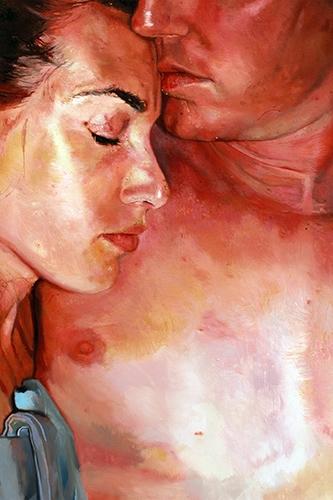
you recently received from the Florida Atlantic University: how did these experiences influence the way you currently conceive and produce your works? And in particular, how does your cultural substratum inform the way you relate yourself to art making?
Hello and thank you for the warm welcome! I’m honored to be a part of the magazine.
My academic training, without hesitation, nurtured the kind of artist I am today. Prior to entering BFA and MFA programs, I was mentored by Gregory Graham Grant, who taught me the beauty of representational drawing throughout middle and high school. He laid a strong foundation for my interest in 2-dimensional illusionistic work. As you mentioned, in 2002 I entered the small undergraduate program at Florida Southern College (which if your readers aren’t aware, is famous for being the largest collection of Frank Lloyd Wright structures) specifically because the professor, William Otremsky, was a figurative painter. I fell in love with painting bodies under his tutelage. Rendering skin, layered flesh, the study of anatomy, all of it was so alluring. It was as if a door opened into a world I never knew I existed but immediately felt at home. I picked up my first brush at FSC and never looked back. It was pure magic! I continue to use the techniques that I learned from both of those mentors today.
In the years that followed earning my BFA, my process of making was sporadic and I was using tired approaches in terms of concept and doing little research/writing
that accompanied the work. I knew the risk of moving to another city would create complications in my personal relationships but ultimately decided attending a Master’s Program was the vital push I required in my artistic and professional growth. During the three year program at Florida Atlantic University (FAU), I grew into a more assertive, curious and driven individual. I know the structure of MFA programs may vary from school to school but the format at FAU, had a very specific path: year one the breakdown of intuitions and common modes of thinking and making, year two is experimentation and exploration while slowly regaining a foundation, and by year three, you truly have a sense of who you are, what you are making, and how you are communicating that visual language.
I created hideous work in that first year, which was extremely difficult to reconcile. I entered the program with preconceptions about how art should be made. I am a reformed perfectionist!
The results of your artistic inquiry convey such coherent sense of unity: before starting to elaborate about your production, we would suggest to our readers to visit
https://www.ashleycassens.com in order to get a synoptic view of your multifaceted artistic production: while walking our readers through your process, we would like to ask you if you think that there is a central idea that connects all of your work as an artist.
Absolutely. Throughout my life, bodies of work will change but the central tenant of
my work in the past 2-3 years is that paint is a conduit for touch. I feel so starved for connections, when so much of my life is mediated through a screen. Whether it’s my phone, a tablet, a laptop, or the endless Netflix streaming on my smart tv. Virtually every interaction I have is negotiated through a device.
I began thinking about these concepts while reading an interview of David Reed by David Ryan in Talking Painting: Dialogues with 12 Contemporary Abstract Painters. While his abstract paintings are dissimilar to my representation figure paintings, what he wrote about technicolor light in reference to the practice of painting resonated with me. To paraphrase, he discussed that during the Baroque Period, paintings were illuminated by candle light, versus today in which most images are illuminated through a screen. This affects how we view light and color today.
For me, painting is the last vestige of connection that I have to the world, to people. There are so few things that take the time and care in a physical space, like painting does.
For special edition of Peripheral ARTeries we have selected your Lifeline series, that our readers have already started to admire in the introductory pages of this article: what has at once captured our attention of your successful attempt to demonstrate how paint can be an expression of intimacy and connection is the way you have provided the visual results of your artistic inquiry with such autonomous aesthetics: when walking our readers through the genesis of this captivating project, would you tell us if you think that your being woman provided your research with some special value?

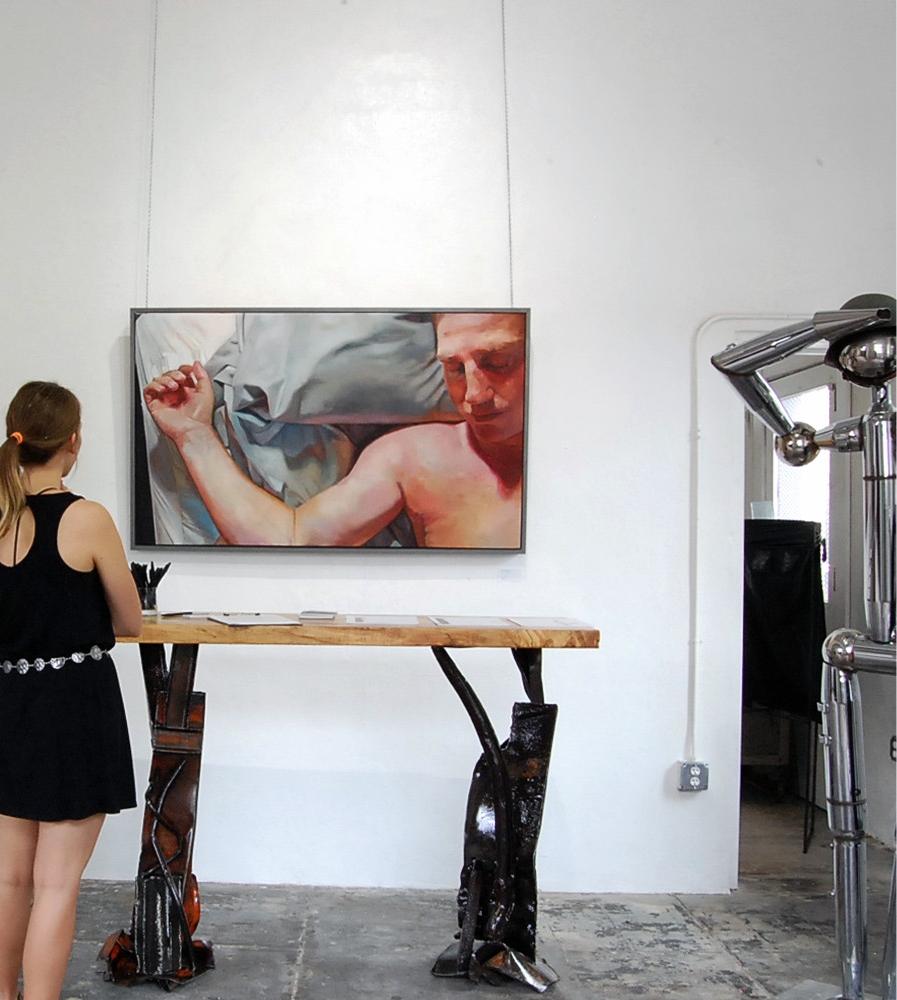

The Lifeline series, which I’m so excited that you are featuring, was born out of a longing to spend meditative time with my husband. In 2014 I made the difficult choice to move to another city, apart from fiance to accept a Graduate Teaching Assistantship at Florida Atlantic University. During my studies, we were married, living in two separate cities, and navigating newlwededness through Skype. We missed each other immensely. In my studio, I was creating paintings that dealt with my experiences through a screen. The oil paintings were highly chromatic, and vibrantly textured portraits which depict projected patterns onto myself and my husband’s bodies. (My process is to shoot reference images and then create works of art based on those photos.) So, I was already introducing both of our bodies into the same artistic space, which I was beginning to understand was very vital to my making. Yet, I was still allowing this barrier between the viewer and the painting. A physical mask, if you will.
I discovered Catherine Murphy’s workwho if your readers aren’t already familiar with, she creates the most beautifully rendered drawing and paintings of ordinary objects, like an oven, tissue paper, or fog on a glass. Although they are inanimate, the finished pieces feel so figurative and intimate. I thought, “I just want to paint the freckles on my husband’s shoulder, with this kind of intimacy.” And for whatever reason, because of my own artistic hang-ups, I thought this was unacceptable, or deceptively simple. Murphy’s work proved to me that the most ordinary objects have value and I began to
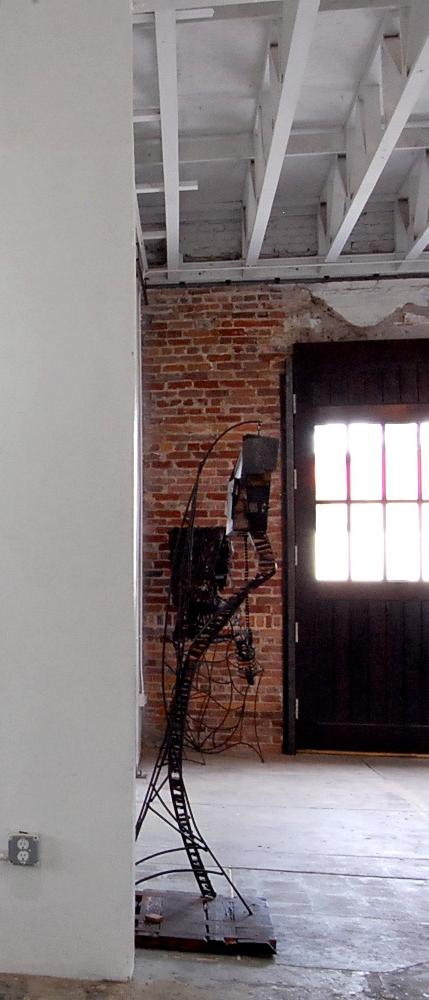


What I discovered was that this way of making provided a freedom to bridge both my personal goals, spending intimate time with my partner, and my artistic goals,
painting beautiful layered oil paintings of flesh.
Does being a woman provide my research with special value? Special may be difficult to measure. Because I have no other lens to view my research through, I’m not sure

what I could compare it to anything else. Being female certainly impacts how I operate in the world, and because of this I am unable to separate my experiences from the art that I make. I think being a woman that paints bodies I am acutely
aware of how I present my body and the poses I use. In the Lifeline series, there are several paintings of male nipples. The same representation of my nipple would be viewed very differently, which is disparaging.

We have really appreciated the vibrancy of thoughtful nuances of your pieces, that are often marked out with intense tones that, as Commingling I and Wrap create tension and dynamics. How did you come about settling on your color palette? And how much does your own psychological make-up determine the nuances of tones you decide to use in a piece and in particular, how do you develop a painting’s texture?
Great question, as color is perhaps my favorite component of building a painting! Color is very intuitive to me - I am drawn to more vibrancy, naturally. The clothes I wear, for instance tend to be very bright and I gravitate towards images that have a high saturation level. In undergrad I did a series of figures that were juxtaposed against nuclear explosions, which gave me ample opportunity to create colors, literally, set ablaze. When I set up my palette to paint, I use a full spectrum of color but only in the past 2-3 years have I really began to appreciate desaturated hues. It was a conscious effort in the Lifeline series to try to mute my hues.
I of course, love Jenny Saville’s work, and I got some response that the hues in Commingling I were reminiscent of that, which is a huge compliment to me. Even
hues in Arteries (Anxiety Feet) can veer towards garish, which is a tension I embrace. In terms of psychological make-up of my hues, it was very important to me that when painting works like Wrap, Enfold, and Low Sleep (US) that my flesh tones and my husbands flesh tones be distinctively nuanced. His skin has undertones of pink/violet, while my skin leans toward a yellowy ochre/green color. The subtlety of painting that was very intentional to describe our relationship.
Texture is valuable to my work when considering the affection I have for the person I’m painting. Layering paint is like touch in absentia. The more important an area of the body is to me, the more layered it becomes. As an example, I would like to hold my husband's hand, therefore paint is more builtup in that area of the painting. Often, I will lightly sand a layer of paint after it has dried, layering colors until I achieve a texture and result I’m happy with.
As you have remarked in your artist's statement, you find the construction of each painting to be the accumulation of meditative moments in which time and space lose context: how much does personal experience fuel your creative process? In particular, do you think that a creative process could be disconnected from direct experience?

My personal experience drives every work. I was reading Mihaly Csikszentmihalyi’s book FLOW, which helped me to understand the space that many creatives call “getting into the zone”. Painting my husband was like meditation.
I couldn’t stroke his eyebrow, or press my face in between the crook of his arm, so paint offered that space. There has never been a
time in my life that a painting was disconnected from my personal experience.
They are intrinsically linked.
While referring to reality, your paintings convey such captivating abstract feeling: as a representational figure painter, how do you view the relationship between the concepts of the real and of

the imagined playing within your works?
You know I have always painted representationally. Michelangelo is
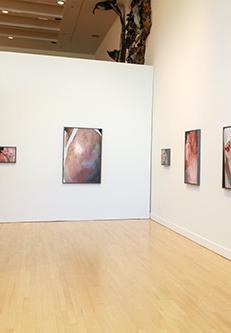

famous for saying “show me an angel and I’ll paint an angel”. I paint what I see. I have always loosely constructed spaces, posed people, shot references photos and then taken those images back to my canvas to start a work. I find abstraction to be so difficult and without reward for me. I have great appreciation for abstract makers. It is something that is difficult for me to execute well.
I used to believe this was a lack of imagination on my part, until I attended a workshop with esteemed figure painter and instructor, Steven Assael. One day in our workshop, he said, “Everything you paint is from memory”. This was shocking to me, as he is well known for painting strictly from life. He doesn’t paint from memory, I thought! He expanded on this thought, by explaining that if you are painting from life, every second you look away from that model, you are painting from memory. You are no longer looking at the model or the reference image - you paint from memory. When I paint my husband, I enhance certain parts of his body as it relates to my understanding of him. So while I use reference images, the painting is not the image, it’s an accumulation of memories, layered to create something entirely new.
Your artwork is pervaded with images rich with symbolic elements, that come from your personal experience of loss and absence but that at the same time trigger the viewer's perceptual and cultural parameters. What is your opinion about it? Moreover, would you tell us something

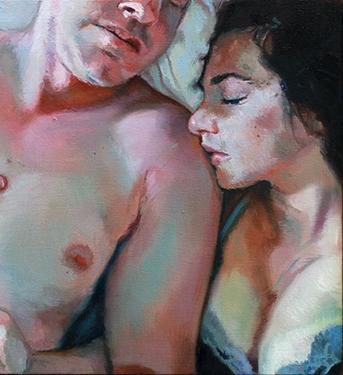

about the importance of symbols in your imagery?
The sheets in my work provide two important duties: one they are symbolic of the intimate space, and two, they provide an important balance of cool/warm hues. With the exception of “Arm Crook” which depicts a pillow, the other works don’t specifically describe a bed, or a bedroom. By including sheets I don’t have to tell the viewer that this place is sacred, quiet or vulnerable.
I think certain parts of mine and my partner's bodies are also symbolic. Painting a hand is very personal to me because I am retracing touch.

Besides producing the interesting works that our readers have admired in these pages, you also teach and in 2016 you worked at the Ringling Museum of Art in Sarasota, FL: how much does this experience inform your vision about Art? And in particular, did you ever get inspired from your students?
Yes! Teaching can be a selfish pursuit because I am so inspired by the way students think and make.
Teaching children and adults is very different, and I’m blessed to have been able to do both.
It is interesting to me how differently children and adults approach making. It has been my experience that children are receptive to experimentation and dive right in, without expectation. Adults approach making with a lot of hesitation, and are afraid of “doing it wrong”. They want to

know the steps. The fear of failure is something we are taught and adults harbor a lot of self doubt when it comes to making art. I particularly enjoyed teaching at FAU because the student population is so diverse. Because of their multitude of experiences, it provided rich one on one conversations and group critiques.
Over the years your works have been exhibited in several occasions, including shows at the ARC Gallery in Chicago, The Cornell Museum in Delray Beach, the Box Gallery in West Palm Beach and Palm Beach State College in Palm Beach Gardens, FL. One of the hallmarks of your work is the capability to create a direct involvement with the viewers, who are urged to evolve from a condition of mere spectatorship. So before leaving this conversation we would like to pose a question about the nature of the relationship of your art with your audience. Do you consider the issue of audience reception as being a crucial component of your decision-making process, in terms of what type of language is used in a particular context?
Lifelines is a vulnerable series of work because it is voyeuristic. Additionally, I am no longer exposing myself but also my husband, who is not an artist, and has responsibilities in the world that could be negatively impacted by the literal and figurative nakedness in my paintings. I was required to be sensitive of how he was presented to an audience.
The nature of the audience caused me pause early in the process but it something that I embrace and really enjoy. I am aware, and
hopeful, that these images go out into the world. In this age of oversharing, ideas of privacy have changed. I think vulnerability should be celebrated, it’s so much more authentic than our profile pic or the highlight reel on Instagram.
Thanks a lot for your time and for sharing your thoughts, Ashley. Finally, would you like to tell us readers something about your future projects? How do you see your work evolving?
Thank you so much for listening!
I’m currently working on a series of small jewel-like oil paintings, measuring the size of a photograph, only 5” x 7”. The concept of working small is so intimate and special to me. It forces the viewer to be physically close to see the work, allowing them to enter a private space. As a maker, I often hold these paintings while I work on them. Each painting is delicately and deliciously layered which depict a seminal memory in my childhood. I started the series when I became pregnant with my first child. There’s a real sense of urgency to complete the series, as I am in my third trimester and I view these paintings like letters to my daughter, sharing my memories of growing up, the rooms I grew up, the companions I had, the trips I made.
I would like to introduce myself as a multidisciplinary artist who specializes in various fields. I specifically use artistic methods in which I feel most connected to, allowing me to express my feelings through painting, photography, experimental film making, installations, electronics and more. I try not to focus on the how, rather the what, accessing my intuition and allowing the ideas to flow through the natural instinct of the curiosity. I love experimenting and discovering.
In this moment of my career I am very interested in how the internet and the digital world has become a transcendent revolution for communication, increasing relations with others and also the ways in which we are able to create. Related to my constant feeling about who am I and to the social and individual identities, I believe that this new form of digital relationships is creating and developing multilayered individuals. These individuals could get sometimes saturated and develop multiple personality masks, as Pierre Bourdieu has said many years ago.
On other side, the digital revolution is also giving us the opportunity to transcend our way of creating. That’s why I am very interested in creating “digital paintings”, where the spectators, through an interactive installation, have the opportunity to experience the process and the way of the artist’s creation. A relative process, of course, that thanks to the distribution of the elements gives also a hint of the relativeness of matters.
participants of their works to inquiry into both into the private sphere and in the social one: we are very pleased to introduce our readers to his stimulating and multifaceted artistic production.
Unconventional and captivating in its multifaceted nature, multidisciplinary artist Victor Cano's work is indeed difficult to pin down: his practice involves painting, photography, experimental film making, installations, electronics and his body of works that we'll be discussing in the following pages, urges the viewers to evolve from a condition of mere spectatorship. One of the most impressive aspects of Cano's practice is the way it accomplishes a successful attempt to trigger the perceptual and cultural parameters of the
Hello Victor and welcome to Peripheral ARTeries: we would start this interview with a couple of questions about your multifaceted background that you are currently nurturing at the Barcelona University. How does formal training influence the way you currently conceive and produce your works? And in particular, how does the relationship between your cultural substratum inform the way you relate yourself in your artistic inquiry?
Firstly, I want to thanks to the Peripheral ARTeries

team for your interest in my work and for giving me the opportunity to express my feelings and thoughts in your magazine.
In this moment, I am a Fine Arts student in Barcelona’s University, but in this right moment I am for a year based in Hamburg, where I keep my studies as an international student in the HFBK. So, as a student and an artist, I am in the way on finding answers and recognizing some feelings in my relation with materials and formal trainings. I have understood that for example, we cannot control the materials, due to the fact that they have their own natural process so, we need to work with them to understand how can we treat them and what can they offer to us. I conceive my artworks then, as something that maybe get transformed in the future, even if is a digital work. It’s funny because some days ago I founded a photobook I created two years ago and, I realized, that the color of the ink printed pictures were so different from the day I printed them. Maybe it was the type of paper, maybe the ink...but they transformed!
About the second question. I live in a metropolis, where I see hundreds of people every day in the street, at work, at university, etc. Sometimes I feel that in these massive everyday relationships I activate an automatic mechanism where, leaded by my lived experiences, I tag and classify in my mind the others, something that I believe happens to many people. But, by other side, I think also that everything is relative and, how we see or interpret something, will depend on many points as, who’s eyes are contemplating something, how do you feel that day… Somehow, I think this fact has affect me and consequently influenced my vision, reflected in my art works.
Before starting to elaborate about your artistic production, we would invite to our readers to visit https://victorcanotoledo.persona.co in order to get a synoptic view of your work: while walking us through your process, would you like to tell to our readers something about the
